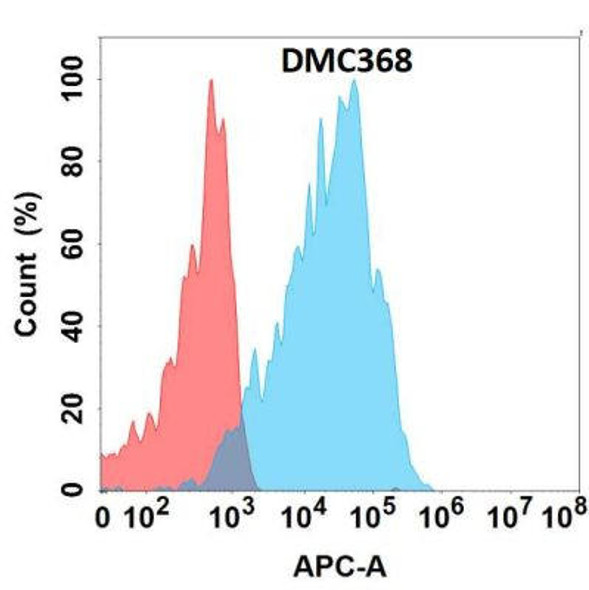Anti-CXCL1 Chimeric Recombinant Rabbit Monoclonal Antibody (HDAB0322)
- SKU:
- HDAB0322
- Product Type:
- Rabbit Monoclonal Antibody
- Antibody Type:
- Monoclonal Antibody
- Size:
- 100 μg
- Reactivity:
- Human
- Host Species:
- Rabbit
- Antibody Isotype:
- Rabbit/Human Fc chimeric IgG1
- Clone:
- DMC499
- Synonyms:
- FSP, GRO1, GROa, MGSA, MGSA-a, NAP-3, SCYB1
Description
system_update_altDatasheet
Anti-CXCL1 Chimeric Recombinant Rabbit Monoclonal Antibody (HDAB0322)
Additionally, the CD300A Polyclonal Antibody (CAB10006) offers high specificity and sensitivity, ensuring reliable and accurate results in experimental studies. Researchers can trust in the quality and performance of this antibody to provide valuable insights into the role of CD300A in immune regulation.Overall, the CD300A Polyclonal Antibody (CAB10006) is a valuable tool for researchers seeking to investigate the mechanisms of immune modulation and the potential therapeutic applications in various disease settings.
Whether studying immunology, cancer biology, or inflammatory disorders, this antibody provides the necessary tools for advancing scientific knowledge and exploring new treatment approaches.
| SKU: | HDAB0322 |
| Size: | 100 µg |
| Clonality: | Monoclonal |
| Clone: | DMC499 |
| Synonyms: | FSP; GRO1; GROa; MGSA; MGSA-a; NAP-3; SCYB1 |
| Applications: | Flow Cyt |
| Recommended Dilution: | Flow Cyt 1:100 |
| Host Species: | Rabbit |
| Isotype: | Rabbit/Human Fc chimeric IgG1 |
| Reactivity: | Human |
| Purification Method: | Purified from cell culture supernatant by affinity chromatography |
| Formulation: | Powder |
| Buffer: | 1XPBS |
| Storage: | Store at -20°C to -80°C for 12 months in lyophilized form. After reconstitution, if not intended for use within a month, aliquot and store at -80°C (Avoid repeated freezing and thawing).Lyophilized antibodies are shipped at ambient temperature. |
| Usage: | Research use only |
| Background: | This antimicrobial gene encodes a member of the CXC subfamily of chemokines. The encoded protein is a secreted growth factor that signals through the G-protein coupled receptor, CXC receptor 2. This protein plays a role in inflammation and as a chemoattractant for neutrophils. Aberrant expression of this protein is associated with the growth and progression of certain tumors. A naturally occurring processed form of this protein has increased chemotactic activity. Alternate splicing results in coding and non-coding variants of this gene. A pseudogene of this gene is found on chromosome 4. [provided by RefSeq, Sep 2014] |










